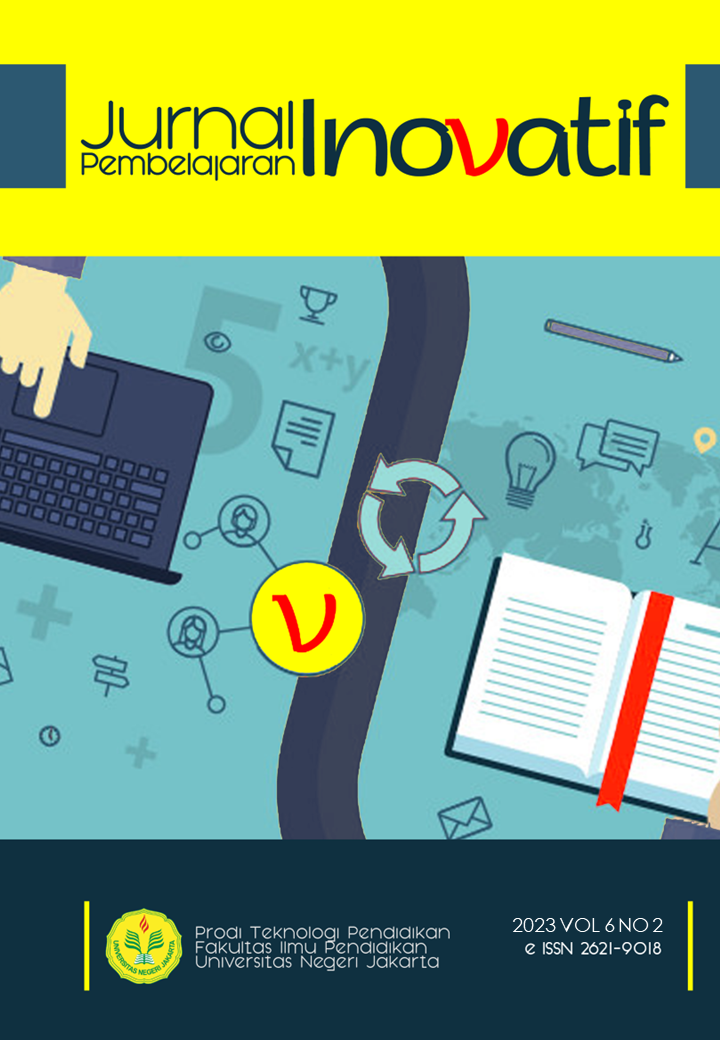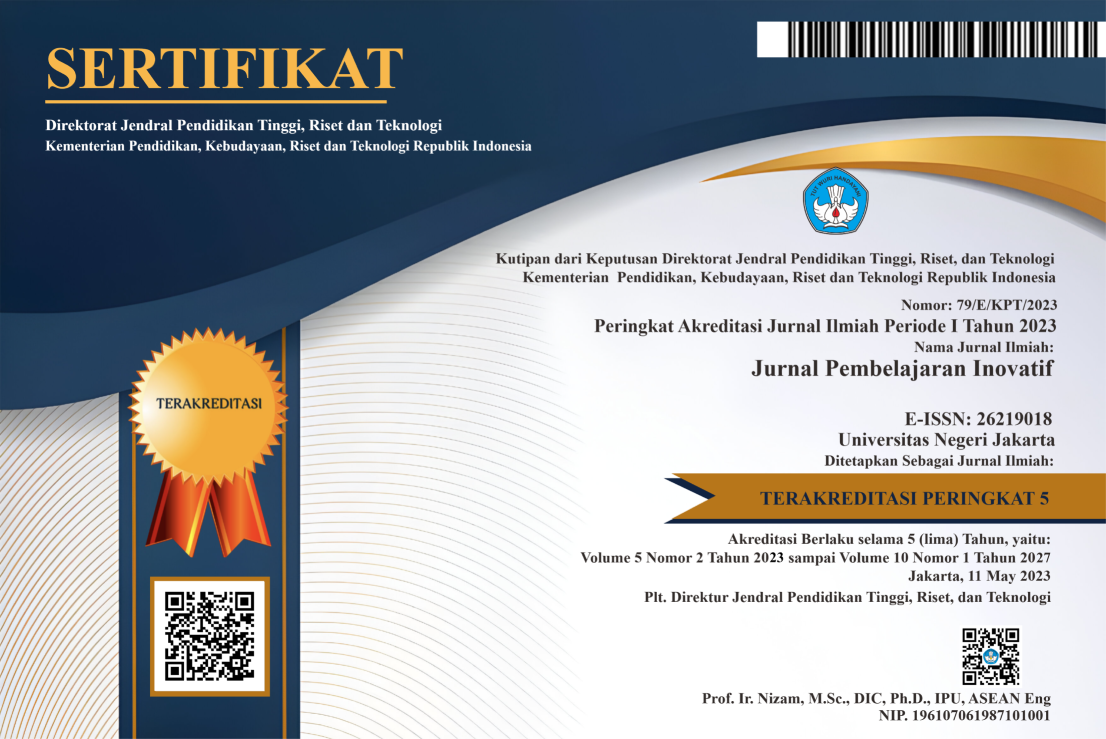Merancang Flowchart Gamifikasi Pembelajaran
DOI:
https://doi.org/10.21009/JPI.062.11Keywords:
Computational Thinking, Gamification, Learning Media, Online LearningAbstract
Upaya pengembangan dibutuhkan untuk meningkatkan kualitas pembelajaran dan mengikuti perkembangan teknologi, diperlukan media pembelajaran yang menarik dan efektif. Hasil penelitian menunjukkan bahwa pendekatan gamifikasi efektif untuk pembelajaran bagi peserta didik dewasa. Gamifikasi tidak hanya sesuai digunakan untuk anak-anak, tetapi juga dapat disesuaikan dengan lingkungan pendidikan dan tempat kerja untuk memotivasi dan mencapai tujuan pribadi. Dengan gamifikasi diharapkan dapat menciptakan lingkungan belajar yang menyenangkan dan menghasilkan pengalaman yang diharapkan. Tujuan dari penelitian ini adalah menghasilkan Desain Gamifikasi Computational Thinking Matakuliah Belajar Berbantuan Komputer. Produk yang dikembangkan pada penelitian ini didasarkan pada pengembang menggunakan Model Rapid Prototyping yang dikembangkan oleh Tripp dan Bichelmeyer. Model ini terdiri dari 5 tahap, yaitu: Assess Needs and Analyze Content, Set Objectives, Construct Prototype (design), Utilize Prototype (research), dan Installing and Maintain System. Hasil pengembangan Gamifikasi Computational Thinking ini adalah dokumen desain gamifikasi berupa flowchart yang menggambarkan bagaimana interaksi gamifikasi diterapkan dalam online learning.
Abstract
Development efforts are needed to improve the quality of learning and follow technological developments, interesting and effective learning media are needed. The results showed that gamification approach is effective for learning for adult learners. Gamification is not only appropriate for children, but can also be adapted to educational and workplace environments to motivate and achieve personal goals. With gamification, it is expected to create a fun learning environment and produce the expected experience. The purpose of this study is to produce a Computational Thinking Gamification Design for Computer-Aided Learning Courses. The product developed in this study is based on developers using the Rapid Prototyping Model developed by Tripp and Bichelmeyer. This model consists of 5 stages, namely: Assess Needs and Analyze Content, Set Objectives, Construct Prototype (design), Utilize Prototype (research), and Installing and Maintain System. The result of the development of Gamification Computational Thinking is a gamification design document in the form of a flowchart that illustrates how gamification interactions are applied in online learning.
Downloads
Published
How to Cite
Issue
Section
License
JPI provides immediate open access to its content on the principle that making research freely available to the public supports a greater global exchange of knowledge.
All articles published Open Access will be immediately and permanently free for everyone to read and download. We are continuously working with our author communities to select the best choice of license options, currently being defined for this journal is licensed under a Creative Commons Attribution-ShareAlike 4.0 International License (CC BY-SA).




